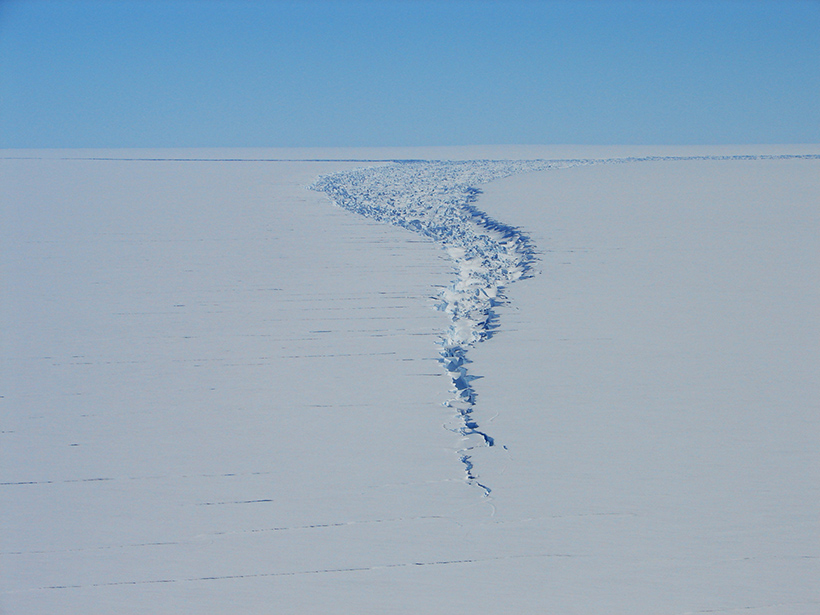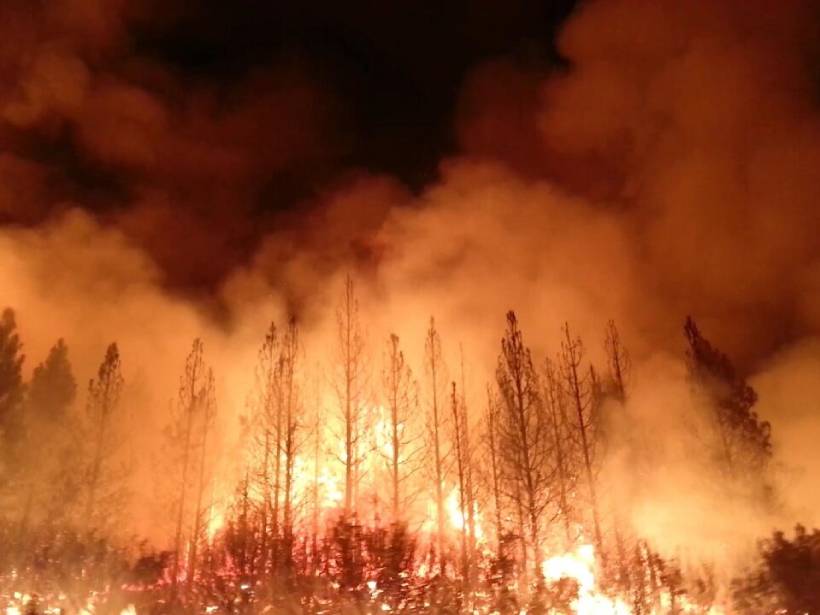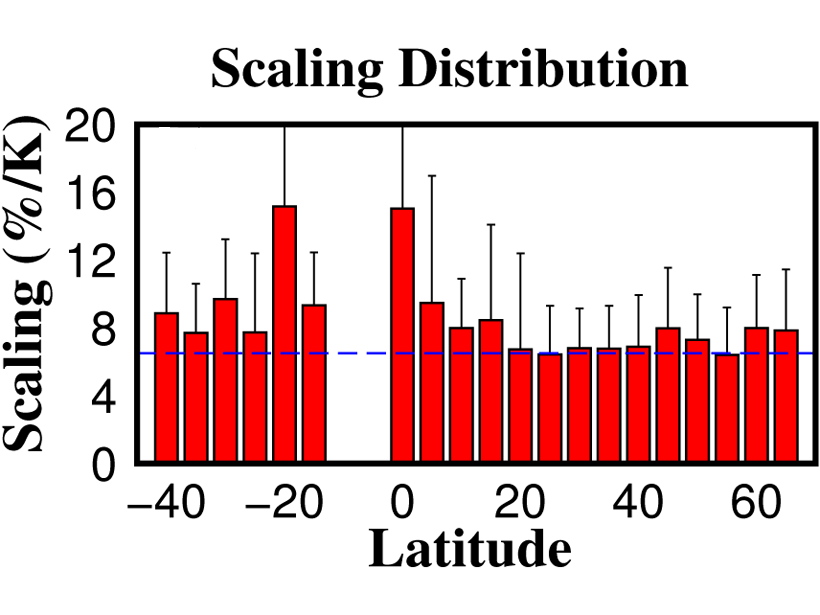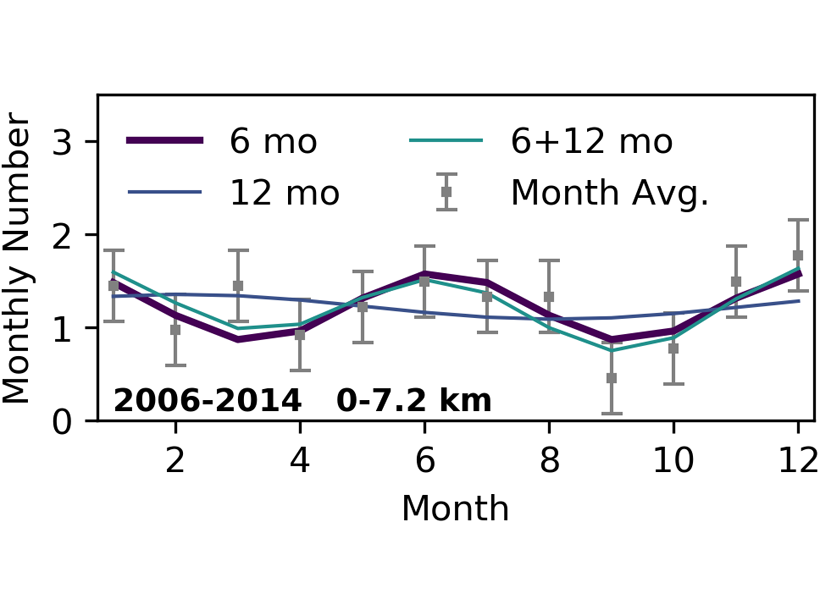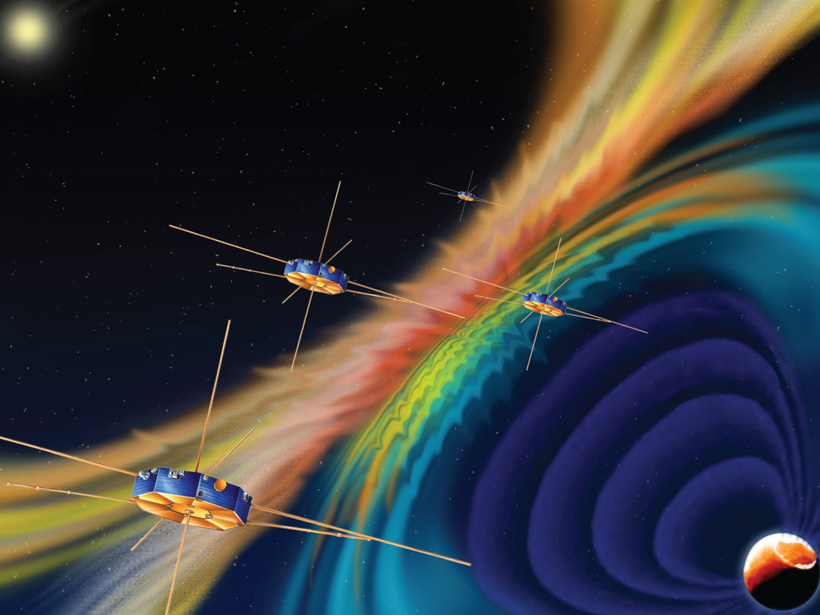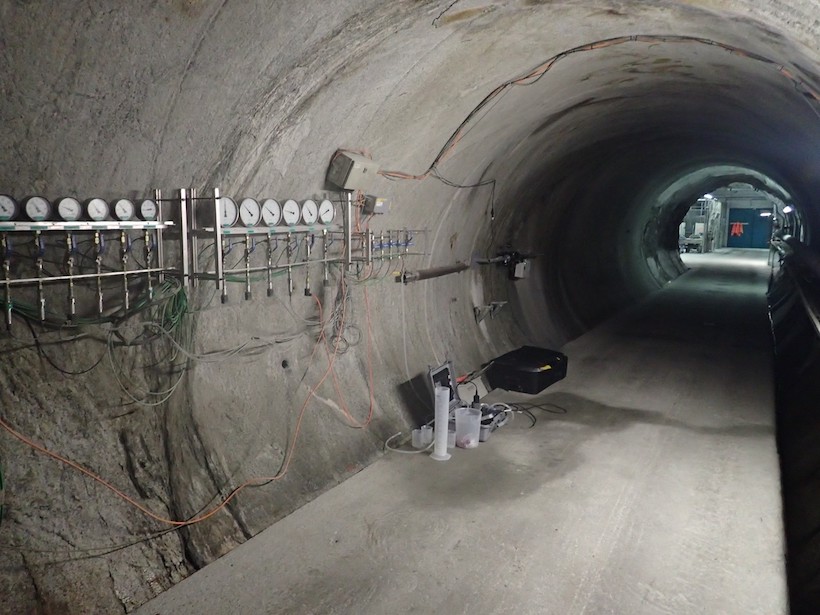NASA’s ICESat-2 satellite recorded the cleaving of a 315-billion-ton iceberg from Amery Ice Shelf in 2019, as well as years of subtle cracking and splitting prior to the calving event.
Geophysical Research Letters
Researchers Home in on the Age of the Yangtze River
Findings on the river’s age also have implications for past landscape change in Asia.
When Will the Next Failure Be?
Unprecedented images of fracture networks in laboratory scale experiments mixed with machine learning algorithms help predict the timing of the next failure.
Widespread Wildfire as a Proxy for Resource Strain
Researchers have found a strong correlation between the number of days with widespread, synchronous fire danger and resource allocation across the western United States.
Ice Age Testing Reveals Challenges in Climate Model Sensitivity
Increased reflection of incoming sunlight by clouds led one current-generation climate model to predict unrealistically cold temperatures during the last ice age.
Rainfall Change with Warming More Consistent than Anticipated
Dew point temperature better explains precipitation change with warming than temperature itself, and the relation is more spatially coherent than previously thought.
Robot Measures Air-Sea Carbon Dioxide Exchange in Southern Ocean
Unique air and ocean surface observations of the Southern Ocean from a 22,000 km, 196-day circumnavigation around Antarctica by an Uncrewed Surface Vehicle.
Why are Earthquakes on the San Andreas Seasonally Modulated?
There is growing evidence that some earthquakes occur seasonally but also that water loading cannot explain these observations.
Spacecraft Reveal New Details of Magnetic Reconnection
Energetic electrons are accelerated directly by magnetic reconnections and can act as tracers of large-scale magnetic field conditions.
Earthquakes Can Acidify Groundwater
Fracturing during microearthquakes can cause groundwater pH drops. The change is temporary but can be equivalent to the difference between water and vinegar.

